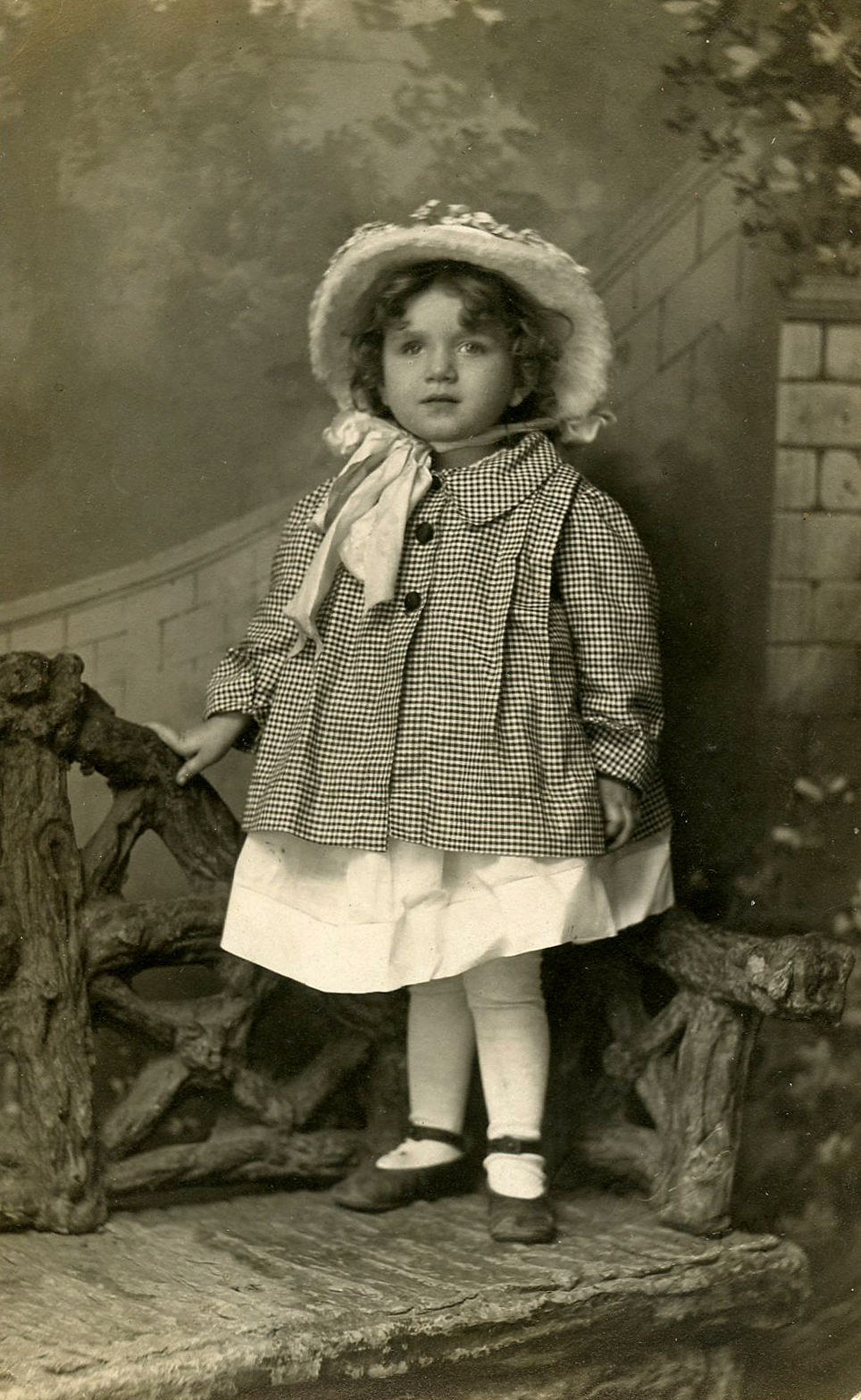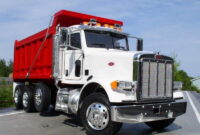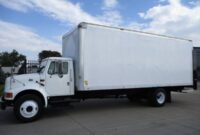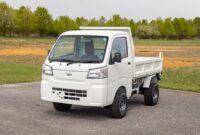Vintage Mack Trucks For Sale: A Comprehensive Guide to Owning a Piece of American History pickup.truckstrend.com
The roar of a diesel engine, the unmistakable silhouette of a powerful grille, and the iconic Bulldog mascot leading the way – for generations, Mack trucks have epitomized rugged American industry, durability, and a relentless work ethic. More than just vehicles, vintage Mack trucks are rolling monuments to a bygone era of engineering prowess and design. For enthusiasts, collectors, and those seeking a unique piece of automotive history, the prospect of finding "Vintage Mack Trucks For Sale" is an exciting journey into a world where craftsmanship reigned supreme and trucks were truly "built like a Mack Truck."
This comprehensive guide will navigate the fascinating landscape of vintage Mack trucks, offering insights into their enduring appeal, where to find them, what to consider before buying, and practical advice for bringing one of these magnificent machines back to life or adding it to your collection.
Vintage Mack Trucks For Sale: A Comprehensive Guide to Owning a Piece of American History
The Enduring Legacy of Mack Trucks
Founded in 1900 by the Mack brothers, the company quickly established a reputation for building robust, reliable vehicles. Their trucks played a pivotal role in two World Wars, spearheaded countless construction projects, and hauled goods across the burgeoning American landscape. The "Bulldog" emblem, first adopted in 1921, became synonymous with strength and tenacity, symbolizing the trucks’ ability to "bulldog" through any challenge.
Vintage Mack trucks represent different eras of this rich history. From the early chain-drive models to the classic B-Series, the ubiquitous R-Series, and the heavy-duty DM/RD models, each truck tells a story of innovation and hard work. Their mechanical simplicity, heavy-duty construction, and distinctive styling have made them highly sought after by those who appreciate true industrial artistry.
Why Invest in a Vintage Mack Truck?
The reasons for seeking out vintage Mack trucks for sale are as varied as the trucks themselves:
- A Piece of History & Nostalgia: Owning a vintage Mack is like owning a tangible piece of American industrial heritage. For many, it evokes personal memories of a father or grandfather who drove one, or simply a deep appreciation for the machines that built a nation.
- Collector’s Item & Investment: Certain rare models, or those in exceptional original condition, can appreciate in value over time, making them a unique investment. The B-Series, in particular, holds strong collector appeal.
- Restoration Project & Hobby: For the mechanically inclined, a vintage Mack offers a rewarding, long-term restoration project. The process of bringing a neglected truck back to its former glory is deeply satisfying.
- Unique Utility & Commercial Use: While not suited for modern over-the-road hauling without significant upgrades, a vintage Mack can serve as a distinctive farm truck, a promotional vehicle for a business, or a showpiece for parades and events.
- Show & Display: Many vintage Mack owners enjoy showcasing their trucks at antique truck shows, where they connect with fellow enthusiasts and share their passion.

Iconic Models to Seek Out

When exploring vintage Mack trucks for sale, certain series and models stand out due to their historical significance, design, or robust capabilities:
- The AC "Bulldog" (1916-1938): The truck that truly earned Mack its "Bulldog" nickname. These early, chain-drive heavy-duty trucks are exceedingly rare and highly prized by serious collectors.
- The B-Series (1953-1966): Perhaps the most iconic and recognizable vintage Mack. The B-61 (conventional), B-75 (heavy-duty), and B-81 (tandem-axle) models are renowned for their distinctive short, rounded hood, butterfly hood openings, and comfortable cabs. They were ubiquitous workhorses and remain incredibly popular for restoration.
- The H-Series (1953-1958): Known as the "Cherry Picker" due to its elevated cab, this cab-over-engine (COE) design was innovative for its time, maximizing cargo space.
- The G-Series (1959-1962): A cab-forward design that offered improved visibility and maneuverability for specific applications.
- The R-Series (1966-2005): While later models are not "vintage" in the strictest sense, the early R-Series trucks (R600, R700, RD) from the late 60s and 70s are highly sought after. They retained much of Mack’s rugged appeal with a more modern conventional cab design, making them versatile for various hauling tasks even today.
- The DM/RD Series (1969-2005): These severe-duty, set-back axle models were designed for construction, refuse, and other demanding applications. Their distinctive angled cabs and robust frames make them highly durable.
- Various Configurations: Vintage Macks come in many forms: tractor units, dump trucks, concrete mixers, flatbeds, log trucks, fire apparatus, and even custom builds. The configuration often influences both price and practicality.
Navigating the Market: Where to Find Your Vintage Mack
Finding the right vintage Mack requires patience and knowing where to look:
- Online Marketplaces:
- eBay Motors: A broad range of trucks, from project vehicles to fully restored models. Be cautious and verify details thoroughly.
- Hemmings Motor News: A reputable source for classic and collector vehicles, including trucks.
- Specialized Forums & Websites: Websites like BigMackTrucks.com, ATHS (American Truck Historical Society) forums, and Facebook groups dedicated to vintage trucks are excellent resources for listings, parts, and advice.
- Specialized Vintage Truck Dealers: Some dealers focus specifically on antique and classic trucks. While prices might be higher, you often get thoroughly inspected vehicles and sometimes even restoration services.
- Auctions:
- Online Auctions (e.g., Ritchie Bros., IronPlanet): Often feature ex-commercial vehicles, some of which may be vintage.
- Live Estate & Farm Auctions: A less predictable but sometimes fruitful source for finding untouched, original trucks.
- Truck Shows & Swap Meets: Attending events like the ATHS National Convention or local antique truck shows is a fantastic way to see trucks in person, network with owners, and sometimes find trucks for sale by private individuals.
- Word-of-Mouth & Local Classifieds: Don’t underestimate the power of local connections. Check local classifieds, farm publications, and even inquire at local mechanic shops or trucking companies.
Crucial Considerations Before You Buy
Purchasing a vintage Mack truck is a significant undertaking. Thorough due diligence is essential:
- Condition Assessment: This is paramount.
- Frame & Chassis: Check for cracks, severe rust, or previous repairs. A solid frame is fundamental.
- Engine & Drivetrain: Is it running? Does it turn over? Listen for unusual noises. Check for fluid leaks. A non-running truck implies significant work.
- Cab & Body: Inspect for rust (especially common in cab corners, floorboards, and fender wells), collision damage, and completeness of trim.
- Interior: Assess the condition of seats, dashboard, gauges, and steering wheel.
- Electrical System: Often a neglected area, check wiring for rodent damage or shoddy repairs.
- Tires: Assume tires will need replacement, especially if they are old and cracked.
- Originality vs. Customization: Decide if you want a historically accurate restoration, or if you’re open to a modified "restomod" with modern conveniences. Original, complete trucks often command higher prices.
- Parts Availability: While many Mack parts are robust, specific components for older models (especially engine parts for pre-Maxidyne engines) can be challenging to find. Research parts availability for your desired model before purchase. Online communities and specialized suppliers are invaluable resources.
- Logistics & Transportation: If the truck isn’t running, how will you transport it? Factor in towing or flatbed hauling costs, which can be substantial for a heavy vehicle.
- Documentation & Ensure the truck has a clear, transferable title that matches the VIN on the vehicle. Verify the VIN and ensure there are no liens or outstanding issues.
- Budgeting Beyond the Purchase Price:
- Restoration Costs: This can range from a few thousand for minor repairs to well over six figures for a complete, professional restoration. Be realistic about your skills, time, and financial commitment.
- Parts: Even small parts add up quickly.
- Tools: You might need specialized heavy-duty tools.
- Storage: Where will you keep it during restoration and after?
- Insurance & Registration: Factor in ongoing costs.
Tips for a Successful Acquisition
- Do Your Research: Understand the specific model you’re interested in, its common issues, and its value.
- Inspect Thoroughly: If possible, inspect the truck in person. Bring a knowledgeable friend or even hire a professional inspector specializing in heavy equipment.
- Ask for Detailed Information: Request numerous photos, videos of the engine running (if applicable), maintenance records, and detailed descriptions of any known issues.
- Verify Everything: Cross-reference VINs, check titles, and confirm the seller’s claims.
- Factor in All Costs: Create a realistic budget that includes the purchase price, transportation, potential repairs, parts, and restoration work. Don’t be surprised by hidden expenses.
- Be Patient: The perfect vintage Mack may not appear overnight. Waiting for the right truck in the right condition at the right price is crucial.
The Journey of Ownership and Restoration
Owning a vintage Mack truck is more than just a purchase; it’s an ongoing journey. Whether you plan a full frame-off restoration or simply want to get it running for occasional use, prepare for a rewarding challenge. You’ll likely learn new skills, connect with a passionate community of fellow enthusiasts, and ultimately, become the proud caretaker of a magnificent piece of American industrial heritage.
Vintage Mack Trucks For Sale: Estimated Price Guide
Please note: Prices for vintage Mack trucks vary wildly based on exact model, year, engine, configuration (dump, tractor, fire), originality, completeness, rust, running condition, and location. This table provides estimated ranges for typical scenarios.
| Model Series | Typical Condition | Estimated Price Range | Key Factors Influencing Price |
|---|---|---|---|
| AC "Bulldog" | Project/Non-Running | $30,000 – $80,000+ | Extreme rarity, historical significance, completeness, engine condition (many are missing original engines). Fully restored examples can fetch well over $150,000. |
| L-Series | Project/Non-Running | $8,000 – $25,000 | Rarity, completeness, specific model (e.g., LTL vs. LJT). Running examples are rare. |
| B-Series (B61) | Project/Rough Running | $7,000 – $25,000 | Rust (especially cab corners/fenders), engine/transmission condition, completeness, original Maxidyne engine (if applicable). |
| Good Original/Running | $25,000 – $50,000 | Minimal rust, strong running engine, complete interior, working gauges. | |
| Fully Restored/Show | $50,000 – $120,000+ | Quality of restoration, originality, provenance, unique configurations (e.g., fire truck). Exceptional examples can exceed this. | |
| R-Series (Early) | Project/Rough Running | $5,000 – $18,000 | Engine type (Maxidyne vs. later engines), condition of cab rust, frame integrity, completeness. |
| Good Original/Running | $18,000 – $40,000 | Dependable runner, minimal major issues, relatively clean interior, good tires. | |
| Fully Restored/Show | $40,000 – $80,000+ | High-quality paint, rebuilt engine/drivetrain, restored interior, chrome accessories. | |
| DM/RD Series | Project/Rough Running | $4,000 – $15,000 | Often worked hard; check for severe frame cracks, engine wear, and major component issues. Often sold as surplus. |
| Good Original/Running | $15,000 – $35,000 | Functional for light work or as a solid base for restoration. Less common to see fully restored to show quality unless very specific configuration. |
Disclaimer: These are general estimates. Always conduct thorough research and inspection before making a purchase. Prices can fluctuate significantly based on market demand and individual truck characteristics.
Frequently Asked Questions (FAQ) about Vintage Mack Trucks For Sale
Q1: Are vintage Mack trucks reliable?
A1: Vintage Macks were "built like a Mack Truck" for a reason – they were designed for heavy-duty, continuous work. While they are mechanically robust, they are also old machines. Reliability depends heavily on their maintenance history, current condition, and the quality of any restoration work. They require ongoing care, but with proper attention, they can be surprisingly dependable.
Q2: Where can I find parts for old Mack trucks?
A2: Parts availability varies by model. For popular models like the B-Series and early R-Series, many mechanical parts (engine components, transmission parts, brake parts) can still be found through specialized aftermarket suppliers, vintage truck salvage yards, or online communities (e.g., BigMackTrucks.com). Body panels and interior trim can be more challenging and may require fabrication or sourcing from donor trucks.
Q3: How much does it cost to restore a vintage Mack truck?
A3: Restoration costs vary immensely. A basic mechanical refresh to get a running truck on the road might cost a few thousand dollars. A full frame-off, show-quality restoration can easily range from $50,000 to over $150,000, depending on the truck’s initial condition, the desired level of authenticity, and whether you do the work yourself or hire professionals.
Q4: Do I need a special license to drive a vintage Mack truck?
A4: This depends on the truck’s Gross Vehicle Weight Rating (GVWR) and your intended use. If the GVWR is over 26,000 pounds, or if it’s equipped with air brakes (and the state requires it), you may need a Commercial Driver’s License (CDL) even for personal use. If you plan to use it commercially, a CDL is almost certainly required. Always check your local Department of Motor Vehicles (DMV) regulations.
Q5: Can I use a vintage Mack truck for modern hauling or commercial purposes?
A5: While mechanically capable, using a true vintage Mack (pre-1970s) for regular modern commercial hauling is generally impractical. They lack modern safety features, fuel efficiency, and speed. They are better suited for light-duty farm work, promotional use, parades, or as show vehicles. Newer "vintage" Macks (e.g., 70s R-Series) might be more adaptable for occasional, non-CDL required light hauling.
Q6: What’s the main difference between a B-Series and an R-Series Mack?
A6: The B-Series (1953-1966) is characterized by its distinctive rounded, short hood and butterfly hood openings. It’s the quintessential vintage Mack, known for its classic styling and robust build. The R-Series (1966-2005) replaced the B-Series and features a more angular, conventional cab design. Early R-Series trucks are still considered vintage but represent a transition to more modern designs while retaining Mack’s legendary durability.
Conclusion
The allure of vintage Mack trucks for sale extends far beyond mere transportation. These magnificent machines are a testament to American engineering, embodying strength, durability, and a rich history. Whether you’re a seasoned collector, a budding restorer, or simply captivated by the charm of classic heavy machinery, embarking on the journey to find and own a vintage Mack is a deeply rewarding experience. With careful research, thorough inspection, and a realistic understanding of the commitment involved, you can become the proud owner of a piece of industrial art, ensuring that the iconic Bulldog continues to roll down the road for generations to come.



